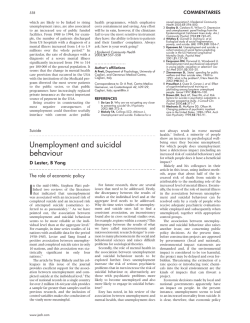
Read Online - Viva Brighton
brighton in history .......................................... Maria Fitzherbert The love of George IV’s life they met. She liked dancing and music, and had a sometimes cruel. He dumped her twice for other ‘lively’ sense of humour, biographer James Mun- women. He was not above using suicide threats son notes, but was also a ‘woman of considerable to win her, or to win her back. He coaxed her into pride,’ who cared strongly about propriety and a secret wedding, then humiliated her by getting respectability. It was marriage or nothing. a friend to publicly deny it had happened. He re- By law, no-one married to a Catholic could suc- peated the humiliation by marrying again, as if she ceed to the throne, and Prince George was first had merely been his mistress. Yet she was clearly in line. This should have put him off, but, after the love of his life, and he risked the throne to be they met in March 1784, he began a reckless and with her. And she seems to have loved him too. It relentless courtship. She planned to go to Europe was, as one book on Mrs Fitzherbert points out, ‘a to avoid his attentions; when he heard this, he very strange love story’. ‘stabbed himself and made out that it was a suicide *** attempt,’ biographer Saul David notes. “I read that his education consisted of quite a lot She went to Europe anyway. George ‘cried by of floggings,” Royal Pavilion guide Louise Peskett the hour,’ according to a contemporary account, says. “That’s what his father thought would make ‘rolling on the floor, striking his forehead, tearing his sons into good upstanding men. But, if we look his hair, falling into hysterics…’ He wrote her at his upbringing in 21st-century eyes, basically frequent, passionate letters, sometimes threatening he was an abused child who had a very remote suicide. She resisted for more than a year. relationship with his parents. “I’d have thought if you fake suicide and batter “And, sure enough, he became a person who someone with letters and send messengers all over couldn’t control his impulses very well, who Europe for them…” Peskett says, “you’d think, seemed to have problems with addiction, we’d after a couple of months he would have thought call it these days. Back then he was just a person ‘oh, ok then, never mind’. She must have really who drank and spent lots of money and took lots meant a lot to him. of laudanum and things. These days, it would be “I think she genuinely did like him, but her feet ringing alarm bells; we’d say ‘that’s a person with were on the ground. She was older and more ex- problems’.” perienced, she could see the bigger picture and the Prince George was reckless with money, impulsive, problems it could cause, and put her good sense melodramatic, and sometimes selfish. But he was before her heart.” also intelligent, witty, charming and sociable. Tall Nonetheless, they married in December 1895, in and handsome in his youth, he had a series of secret. Their relationship status became a popular lovers, all of whom were content to be mistresses. subject of gossip. The prince manipulated his Maria Fitzherbert wasn’t. friend, the MP Charles Fox, to deny the marriage She was six years older than him, a convent-edu- in Parliament; George then went to Mrs Fitz- cated Catholic who’d been widowed twice before herbert and claimed to be astonished at what Fox .... 32.... had said. A witness claimed: ‘Maria turned very pale, and made no reply.’ She refused to see George for some time, which made him so distressed that his health suffered. After she took him back, they went to Brighton for the summer of 1786, where they were ‘a picture of romantic contentment,’ according to a magazine called Royal Romances. ‘In those brief but happy months, the prince appeared to be a reformed character. He drank only moderately, gambled hardly at all, and entertained quietly.’ In the next few years, they spent a lot of time together in Brighton. “It was one of the places they escaped to,” Peskett says, “where they could sort of play at domestic bliss: ‘we’re just an ordinary married couple’, enjoying life and being very cosy and everything.” However, things were going less well by late 1793, Saul David notes. She had ‘long disapproved of his dissolute lifestyle and disreputable friends’. He was so extravagant that she ‘often had to lend him money’. He frequently cheated on her. One of his mistresses, Lady Jersey, convinced the Prince ‘that his unpopularity with the people was due to Mrs Fitzherbert and her religion,’ biographer Valerie Irvine writes. ‘She also told him that Maria had Illustration by Joda jonydaga.weebly.com He lied to her and cheated on her and was been heard to say she was only interested in his rank, not in his person.’ In June 1794, the prince dumped his wife by letter. By this point, George’s debts were enormous, and ‘in return for financial help, the king insisted that he should marry a Protestant princess,’ the Dictionary of British History notes. So, in 1795, he wed Caroline of Brunswick, who he didn’t really like. They separated the following year. After another series of ‘increasingly desperate’ overtures, Mrs Fitzherbert took him back around 1800, Saul David notes. She had been looking after a child called Minney Seymour, and “it sounds like they had quite a happy domestic few years, playing parents with this little girl, in some kind of domestic bliss,” Peskett says. When Minney’s parents died, there was a custody battle between her family and Mrs Fitzherbert, who was devoted to the child. Minney’s relatives Lord and Lady Hertford helped Maria; they became the child’s legal guardians, and let Mrs Fitzherbert keep her. >>> .... 33....
© Copyright 2026
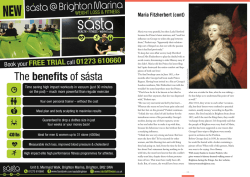
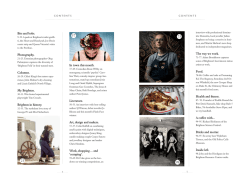

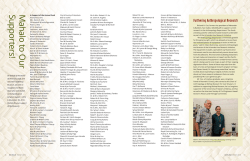
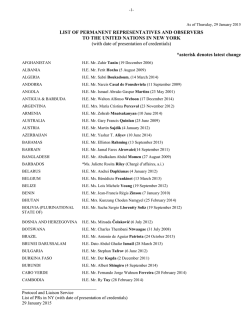


![Download [ PDF ] - journal of evidence based medicine and](http://s2.esdocs.com/store/data/000505409_1-2bc4ae284ea460180bc089744a6eaaca-250x500.png)
